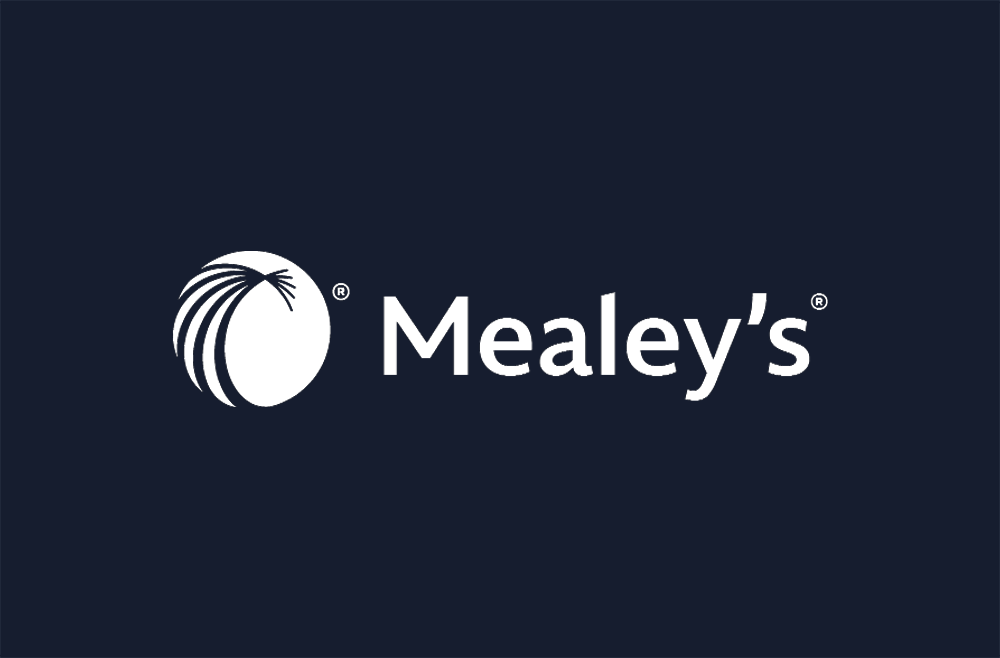HUD Issues Three New Mortgagee Letters for HECM Program Guidance
Hinshaw Alert | 6 min read
Oct 7, 2019
Loan originators and servicers should take note of the fact that the Home Equity Convertible Mortgage (HECM) program has attracted considerable attention from federal agencies and Congress in recent months. In August and September, the Department of Housing and Urban Development (HUD) issued three new Mortgagee Letters involving lending to condominium owners, deferring foreclosure for non-borrowing spouses, and extending HECM Collateral Risk Assessment requirements indefinitely. These Mortgagee Letters require lenders and servicers to make immediate changes to their policies and procedures. We describe these changes below.
HUD Mortgagee Letter 2019-15: Extends Non-Borrowing Spouse Protections
ML 2019-15 supersedes prior guidance addressing foreclosure deferral for non-borrowing spouses for loans originated after August 4, 2014. It allows lenders to defer foreclosure for non-borrowing spouses until after the death of the non-borrowing spouse and eliminates all HUD interim deadlines for assigning such loans to HUD.
Since the inception of the HECM program, HUD had interpreted its regulations to require lenders to call HECMs due and payable upon the death of the last surviving borrower, regardless of whether that borrower was survived by a non-borrowing spouse. In 2013 and 2014, the U.S. District Court for the District of Columbia held that this interpretation was inconsistent with the statute authorizing the HECM program and ordered HUD to develop a plan to protect non-borrowing spouses against foreclosure. In 2014, HUD issued Mortgagee Letter 2014-07, which required all HECMs originated after August 4, 2014 to contain a provision deferring the due and payable status that occurs because of the death of the last surviving mortgagor until the death of the last surviving Non-Borrowing Spouse or until another event of default occurs.
HUD struggled to develop protections for non-borrowing spouses for loans originated prior to August 2014. On January 29, 2015, HUD published Mortgagee Letter 2015-03, which established the "Mortgagee Optional Election Assignment" (MOE Assignment) as the mechanism for providing no-borrowing spouses with loans issued prior to August 4, 2015 with protection after the death of the borrower. The MOE allows lenders to assign a loan to HUD when a qualifying non-borrowing spouse resides in the home, so that the lender can be paid for the assignment and made whole without having to carry out a foreclosure while a non-borrowing spouse is still in the home. HUD holds the loan in its portfolio while it defers the "due and payable" status until the non-borrowing spouse passes away or otherwise fails to maintain the loan obligations.
ML 2015-03 required non-borrowing spouses to show that he or she had "good and marketable title" or a legal right to remain in the home until his or her death and make a one-time "principal limit" payment that was to be calculated in part on the difference in age between the non-borrowing spouse and the borrower, which could potentially be in the tens of thousands of dollars. These requirements were controversial and HUD rescinded ML 2015-03 several months after it was issued. Shortly thereafter, HUD issued Mortgagee Letter 2015-15, which eliminated the Principal Limit payment. HUD continued to require non-borrowing spouses to satisfy other conditions, including proof of good and marketable title within 90 days after the borrower's death. It also imposed strict deadlines for servicers to make this election.
HUD's strict deadlines and the difficulty in determining whether a non-borrowing spouse holds marketable title prevented many otherwise eligible spouses from obtaining the benefits that ML 2015-15 was intended to confer. HUD also determined that its deadlines conflicted with some state laws. To address these complications, HUD recently replaced ML 2015-15 with Mortgagee Letter 2019-15, which allows lenders to assign loans to HUD under circumstances that previously would have precluded an assignment to HUD.
ML 2019-15:
- eliminates the MOE Assignment election and assessment deadlines, along with associated notification requirements;
- eliminates the 120-day timeframe for bringing current all property charges on a HECM subject to a pre-existing loss mitigation repayment plan;
- eliminates the requirement for an NBS to obtain good and marketable title to the property that secured the HECM or demonstrate the legal right to reside in the property for life, and modification of related certifications and assignment criteria; and
- requires lenders to request information from borrowers to identify any non-borrowing spouse.
In order to avoid curtailment of insurance benefits, a mortgagee must pursue an MOE Assignment with reasonable diligence. A Mortgagee meets this reasonable diligence timeframe if the MOE Assignment is initiated in the Home Equity Reverse Mortgage Information Technology (HERMIT) system within 180 days of the death of the borrower or the issuance of this Mortgagee Letter, whichever is later. By extending the deadline to 180 days from the issuance of this letter, HUD seems to be allowing mortgagees to resubmit prior claims that were deemed time-barred. Accordingly, mortgagees should re-evaluate previously time-barred claims, and consider whether they may be resubmitted under ML 2019-15.
Another significant change that will require mortgagees to revise their policies and procedures are new communication requirements. Servicers must now request information from borrowers during the life of the loan to identify Non-Borrowing Spouses before the borrowers' death. A request for the following information must be sent to borrowers with the Annual Occupancy certification:
- Is the borrower currently married?
- Is the borrower's spouse a borrower on the HECM loan;
- If the borrower is currently married and the spouse is not a borrower on the HECM loan, please provide the following:
- Non-Borrowing Spouse's Name;
- Non-Borrowing Spouse's Social Security Number or Taxpayer Identification Number;
- Non-Borrowing Spouse's Date of Birth; and
- The Date of the couple's marriage.
Appendices A and B of ML 2019-15 provide a sample information collection form and fact sheet that servicers may use to model their request to borrowers. Servicers must create a Non-Borrowing Spouse "Contact" in the HERMIT system for all Non-Borrowing Spouses identified through responses received from their information collection requests. Keep in mind that these provisions do not apply to loans assigned FHA case numbers after August 4, 2014, which continued to be governed by ML 2015-7.
HUD has published new informational materials and new web pages to reflect these recent changes.
Mortgagee Letter 2019-16: Collateral Risk Assessment
HUD's Collateral Risk Assessment requirement, commonly known as the second appraisal rule, was due to expire on September 30, 2019. According to ML 2019-16, HUD "has determined that the collateral risk assessment requirements announced in ML 2018-06 are having the desired effect in mitigating collateral risk valuations and will remain in effect." Accordingly, ML 2019-16 extends the collateral risk assessment requirement for FHA-insured HECMs indefinitely.
Mortgagee Letter 2019-17: Condominium Project Approval Rule
The Federal Housing Authority (FHA) has issued a long-awaited update to its condominium rules, easing requiring for condo owners to obtain FHA financing. Mortgagee Letter 2019-17 extends these revisions to HECM loans. The revised rule promises to significantly increase a condo owner's access to HECM financing, which has been limited since FHA eliminated its spot approval process several years ago.
Under the existing rule, the only way to obtain a HECM on a condominium was to get FHA approval of the entire complex, which required a borrower to submit extensive documentation, including proof of adequate insurance, confirmation that no one individual owned more than 10% of the complex, evidence of sufficient cash reserves, and verification that at least 50% of the units were owner-occupied. Potential borrowers had no recourse if their homeowners associations failed to provide the needed documentation.
Under the new "individual unit approval" rule, individual condo units in a building of 10 units or more may be eligible for spot approval if no more than 10% of the units are FHA-insured. Units in buildings with fewer than 10 units, are eligible if no more than two units have FHA insurance. The rules also loosen restrictions on owner-occupancy and mixed-use rules. Units may qualify for FHA funding if they are located in buildings that are as little as 50% owner-occupied. Mixed-use projects can now have up to 35% of their square footage dedicated to non-residential use.
About the Author
Jennifer Gray is a partner at Hinshaw & Culbertson LLP. She represents banks, investors, originators, loan servicers, and other institutions in federal and state court litigation involving financial services and residential real estate.
Related Capabilities
Featured Insights

Press Release
Jan 15, 2026
Hinshaw Client Secures a Complete Jury Verdict in Fraudulent Misrepresentation Horse Sale Case

Press Release
Jan 6, 2026
Hinshaw Adds Four-Member Consumer Financial Services Team in DC and Florida

Employment Law Observer
Dec 8, 2025
12 Days of California Labor and Employment: 2025 Year in Review

Press Release
Dec 4, 2025
Hinshaw Recognized by the Leadership Council for Legal Diversity as a 2025 Top Performer

Press Release
Nov 25, 2025
Hinshaw Legal Team Secures Summary Judgment in Gas Station Injury Case

Press Release
Nov 18, 2025
Hinshaw Releases the Third Edition of Duty to Defend: A Fifty-State Survey

In The News
Nov 13, 2025
A Profile on Neil Rollnick: After 57 Years in Practice, He Has No Plans to Retire






